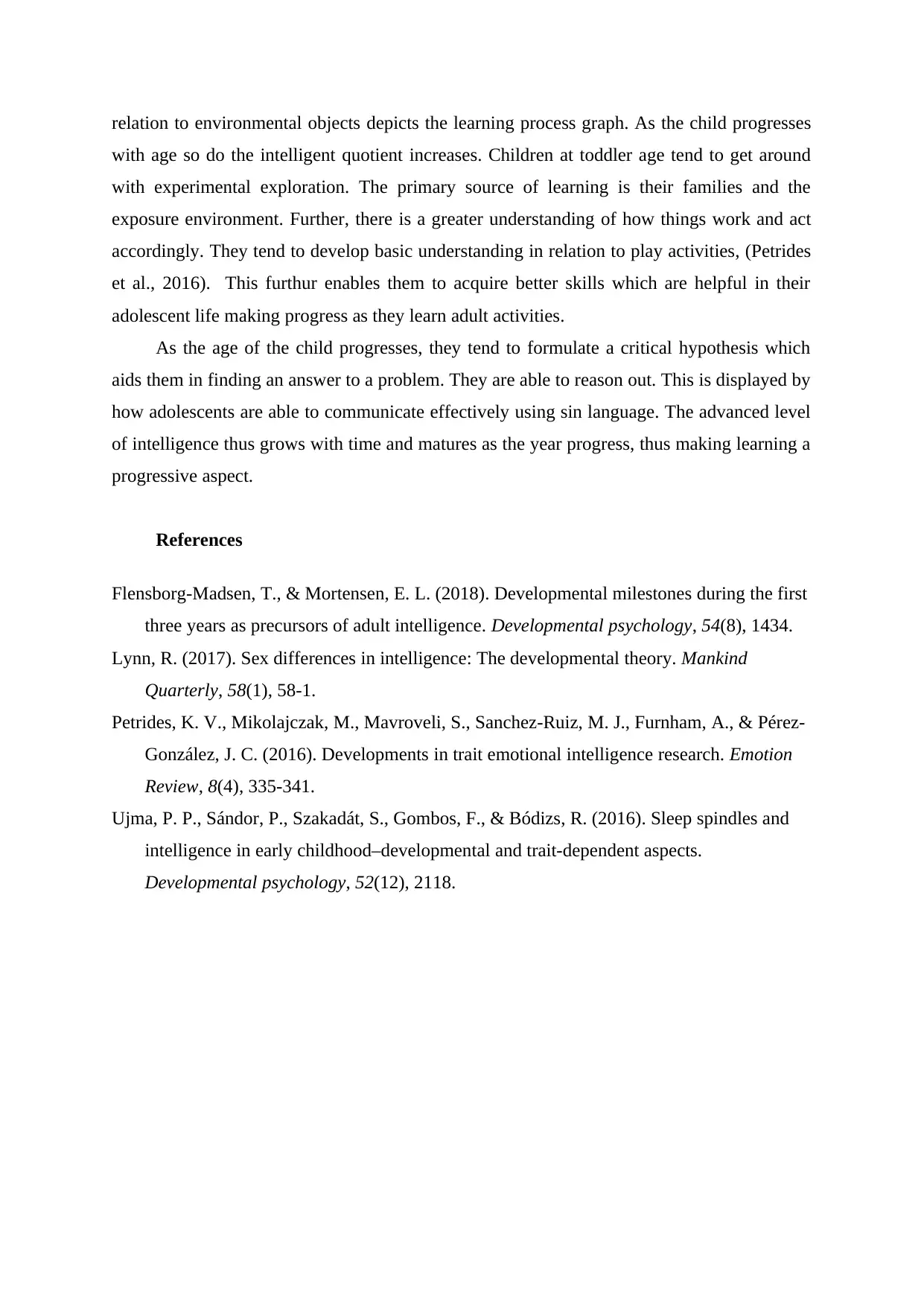University Assignment: Developmental Intelligence and Environment
VerifiedAdded on 2023/04/21
|3
|769
|255
Discussion Board Post
AI Summary
This discussion post explores the concept of developmental intelligence, emphasizing its evolution from infancy to adulthood and the significant role of environmental exposure. It highlights how children learn and develop cognitive skills through interaction with their surroundings, referencing a case study where a child demonstrates recognition and understanding of familiar objects. The discussion traces the development of intelligence through early and mid-childhood, noting advancements in motor skills, cognitive capabilities, and communication techniques. It also addresses the cognitive processes involved, such as remembrance, problem-solving, and decision-making, and how these processes contribute to a child's understanding of their environment. The post concludes by emphasizing the progressive nature of learning and the maturation of intelligence over time, with references to relevant research articles.
1 out of 3










![[object Object]](/_next/static/media/star-bottom.7253800d.svg)